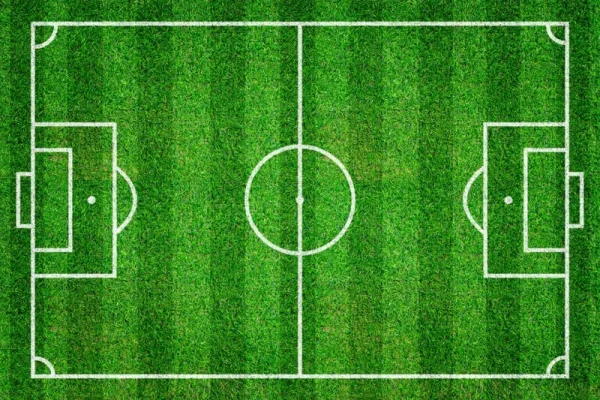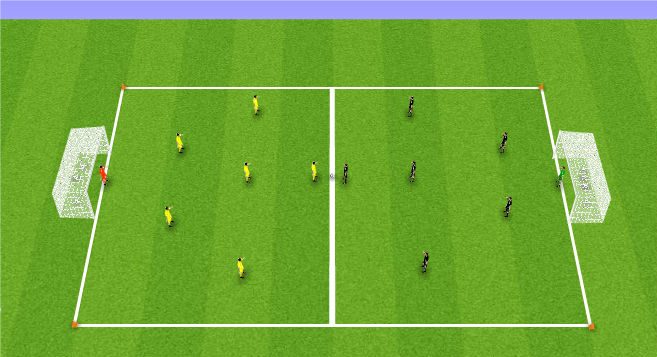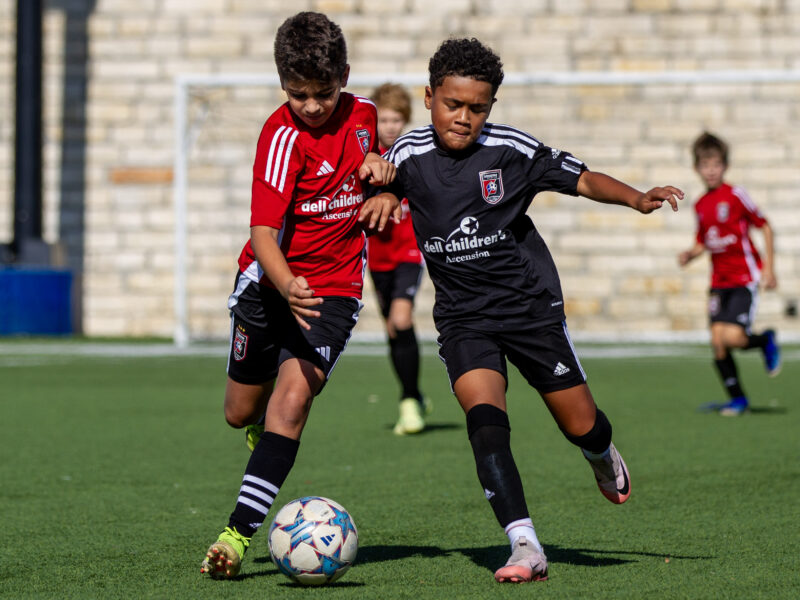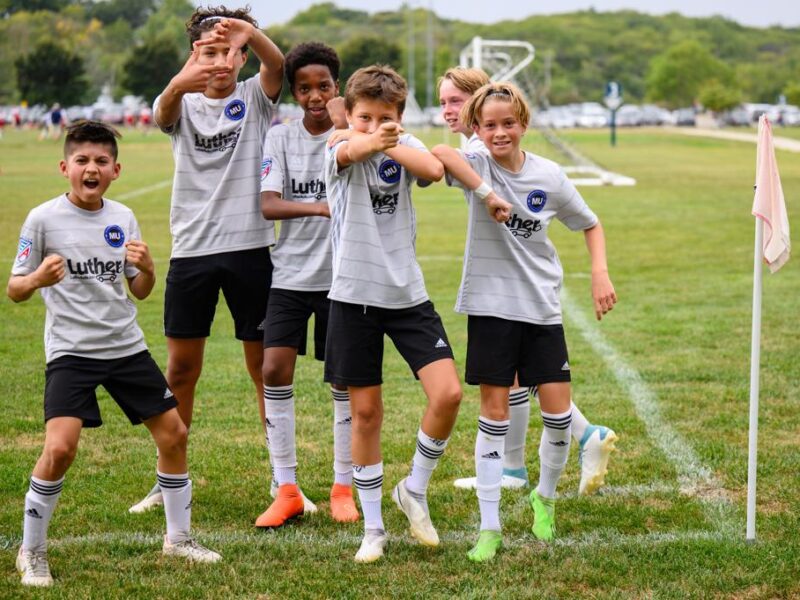There’s something special about watching your players come alive in a 7v7 scrimmage. Maybe it’s the way they shift from drills to game mode without hesitation.
Maybe it’s the way the ball moves just a little quicker when they’re playing for something, even if it’s only pride and a high five at the end. Either way, wrapping up training with a solid 7v7 game does more than just kill time. It gives your session a heartbeat.
This kind of scrimmage blends structure with freedom. It gives young players a taste of real soccer, but within a space where they can still take risks, learn, and grow.
The ball stays in play more often. Touches are more frequent. Every player has a role, and you can actually see them starting to understand what that role means.
But to run it well, you need more than just cones and goals. You need an approach. A rhythm. A way to guide your players without overcoaching the life out of the game. That’s what this is about.
Let’s walk through how you can run a perfect 7v7 scrimmage from setup, to instruction, to the little tweaks that make a good game great.
Field Setup That Feels Right

Start by creating a space that encourages the kind of play you want to see.
For a proper 7v7, you’ll want a field around 60 by 40 yards. That gives enough room for build-up play and shape, but not so much space that players get stretched and lost.
Use full-size goals if you have them. Place one on each end line. If you’re working with younger kids or don’t have a full field, shrink it.
Reduce the field size to fit your group. Keep the width comfortable. Let the size of your players and the skill level guide you.
You’ll also want cones on the sidelines to help with throw-ins and spacing. If you can mark the goal box and penalty area, do that too, even if it’s with flat cones. Little visual cues help younger players understand zones.
Player setup is simple: six field players and a goalkeeper per team. Try to balance the teams by ability. You want the scrimmage to be competitive, not one-sided. That’s where growth happens—when kids have to work to win, not cruise.
CHECK OUT | Top Skills for a Successful Girls U14 Soccer Goalie: What Coaches Look For
Start With the Why
Before you blow the whistle, take a second to explain why you’re doing this. Not in a lecture. Just a quick talk.
Let them know the purpose.
Maybe today you’re focusing on switching the ball. Or building out of the back. Maybe it’s just about finding feet and playing quickly.
Whatever it is, name it. When kids know what they’re looking for, they begin to see the game through a different lens.
Then let them play.
Let the Game Breathe
This part’s key. Once the scrimmage starts, let the game flow. Let the kids feel it. This is where their decisions matter most.
All standard game rules should apply; throw-ins, goal kicks, corner kicks, offsides (if you’re working with older age groups), and fouls. Stick to the rules of real soccer so that it mirrors match conditions. That helps them connect training to actual competition.
You’re not coaching every pass here.
You’re not freezing the game unless it’s absolutely necessary. The goal is to see what they do with the tools you’ve given them. You’ve trained the movements, the shape, the tactics. Now step back and see what sticks.
You’ll be surprised what shows up when you’re not talking every second.
CHECK OUT | What Skills Should a Girls U14 Soccer Player Have? (And How to Help Her Master Them)
Small Tweaks, Big Focus
Once the game is going, you can begin to shape it subtly—without stopping the fun.
Here’s how.
1. Add Minor Restrictions for Purpose
If you want the scrimmage to reinforce a specific skill, try adding gentle rules that shape behavior without overhauling the game.
Examples:
- Two-touch maximum for midfielders to encourage quick decision-making.
- All goals must come after a switch of play to promote wide movement.
- Must make three passes before shooting to emphasize build-up play.
- Wingers must stay wide to teach shape and spacing.
These small rules guide players into habits without removing the spontaneity of the game. They’ll groan at first. Then they’ll adjust. And soon, those patterns become natural.
CHECK OUT | 7 Effective Ways for Your Child to Earn More Playing Time in Soccer
2. Change Starting Scenarios
Instead of always starting with a kickoff from the center, use different scenarios:
- Goal kick from Team A
- Throw-in deep in the opponent’s half
- Corner for Team B
- Free kick after a foul
This builds game awareness and helps players understand how to handle different situations under pressure.
3. Time and Score Pressure
Sometimes the best games come alive when there’s a clock ticking. Try splitting your scrimmage into two halves of 10 minutes, with a one-minute water break between.
You can even play first to 3 goals, or say next goal wins to end a session with fire.
Introduce a score. Keep track. Let them chase something. The moment it matters to them, you’ll see real effort.
Your Role as a Coach During Play

Your voice still matters, even if you’re not directing every move. Use it wisely.
Call out positive reinforcement:
- “Great switch!”
- “Perfect decision to keep it!”
- “Love how you checked your shoulder there.”
Catch the good moments and name them. That’s how they stick.
For mistakes, avoid shouts. Wait until a natural stoppage. Then pull a player aside if needed. Speak calmly. Ask what they saw. Help them rethink, not just redo.
And don’t be afraid to let them struggle a bit. Sometimes the best development comes from failing under pressure and figuring it out in the next round.
When to Step In
There are times when you’ll want to freeze the game. But do it sparingly and with purpose.
Use the “freeze-replay” method:
- Blow the whistle.
- Quickly ask the players to hold their positions.
- Walk onto the field and talk through what’s happening.
- Rewind the moment.
- Let them redo it with their own solution.
This kind of teaching moment only works if you’re calm and clear. Too many interruptions and the game loses its soul.
CHECK OUT | 10 Big Mistakes Every Soccer Parent Should Avoid
Common Challenges and How to Handle Them
1. One team dominates.
Mix up players. Make a quick switch to balance the level. Or give the stronger team a handicap—like one-touch in the final third.
2. Players bunch around the ball.
Pause briefly and walk them through shape. Use cones if needed to show spacing. Visual learning helps.
3. Goalkeepers disengaged.
Give them objectives like organizing their backline or starting counter-attacks. Celebrate good decisions, not just saves.
4. Players losing focus.
Introduce mini-challenges. “Next goal wins.” Or reward the most composed passer with the armband for the next session.
Wrap It Up Right
The ending matters. After the final whistle, gather the group. Keep it short, but intentional.
Ask them:
- What went well?
- What was hard?
- What can we carry into the next game?
Let them speak. Let them reflect. This is where learning deepens. The scrimmage was the test. This is the debrief.
Then end with something positive. Call out a few specific efforts. It could be a player who communicated well. Someone who bounced back after a mistake. A moment of unselfish passing.
Those words stick longer than you think.
CHECK OUT | Understanding Soccer Club Fees: What You’re Really Paying For
Variations to Keep Things Fresh
If you run 7v7 scrimmages regularly, change the flavor every now and then to avoid burnout.
Try:
- Golden Goal Scrimmage – first team to score wins, then new teams rotate in.
- Silent Soccer – no talking for the first five minutes. Forces nonverbal communication.
- Coachless Captains – assign a captain to manage the team. You step back entirely.
These twists challenge your players in new ways while keeping the format familiar.
Why 7v7 Works So Well
At this stage of development, 7v7 gives players the best of both worlds. There’s enough space to learn positioning, angles, and transitions—but not so much that players disappear or hide.
Everyone touches the ball. Everyone defends. Everyone attacks.
You’ll see your center backs learning to step up. Your wingers learning when to tuck in. Your midfielders learning how to receive under pressure.
It’s the game in a size they can handle. And it’s beautiful to watch when they start to figure it out together.
CHECK OUT | How to Build Confidence on the Soccer Field: Proven Tips for Players
Round Up
Running a great 7v7 scrimmage is not about being the loudest coach on the sideline. It’s about setting the stage, letting the game breathe, and knowing when to step in with purpose. It’s about guiding your players into becoming thinkers, not just doers.
So next time you wrap up your session, don’t treat the scrimmage as a throwaway. Treat it like the crown of your training. Let it shine.
Because that’s where the real magic happens.
When they’re playing. When they’re learning.
And when you’re watching them become more than they were an hour ago.



